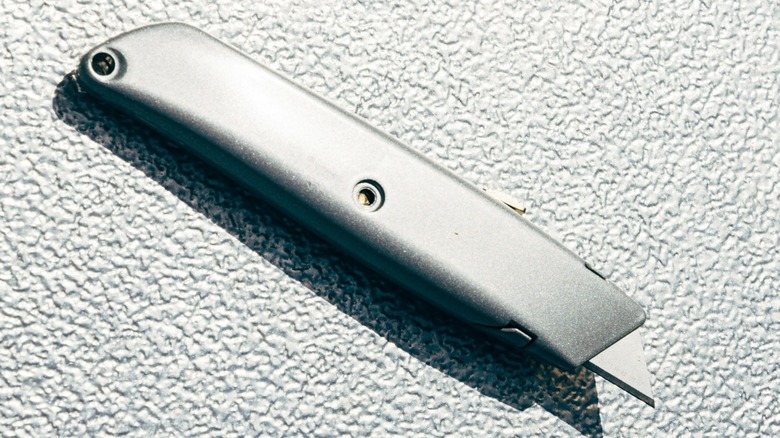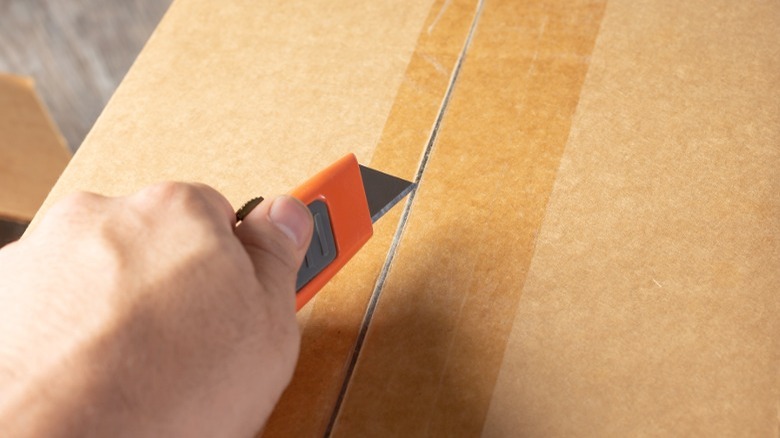The Simplest Way To Change A Box Cutter Knife Blade (& How Often You Should)
Box cutters are an essential tool for workers and homeowners alike, helping us with everything from breaking down cardboard boxes to stripping wires. But handy as they may be, they also carry inherent risks, as knives account for roughly 30% of workplace injuries. While proper handling is always important, using an old blade can make your work significantly more dangerous, no matter how careful you are. Worn blades require more force to cut through materials, increasing the chances of harmful slips. With that in mind, understanding how and when to change to a fresh blade can make all the difference in improving the quality of your work and limiting the chances of injury.
Various box cutter designs have different methods for changing blades. Some products, like certain retractable blades, have a housing you must disassemble. Use a screwdriver to undo the screw on the knife's side. You can then dismantle the housing and carefully remove the worn blade. If the other side is unused, you can turn the blade around for a fresh edge. Many of these knives also store backup blades in the handle. Other designs, such as foldable box cutters, use a locking clip that makes blade changes even easier. On the arm holding the blade, you'll see a dial or lever that releases the blade. You can then turn the blade around to the fresh side or install a new blade. Activate the release to insert the blade and deactivate it to lock the blade in place.
When to change your box cutter knife blade
Changing blades is often straightforward, but knowing when to make the switch can sometimes be confusing. Some blades will clearly need replacing when the tip breaks off or the edge gets gunked up with adhesive or compound. During use, a worn blade will drag and pull rather than cut cleanly through the material. You can also tell that the blade is dull if you see light reflecting off the edge. If you're still unsure about your blade's integrity, do a fingernail test. Lightly press the blade against your thumbnail. A sharp blade should catch easily in the nail, while a dull blade will slide off. A marker will also work as a testing surface if you're uncomfortable using your nail. Run the blade lightly into the marker at a slight angle. If it catches the plastic, it's still sharp.
You can swap in a new box cutter blade if the edge is worn out, or you can sharpen your dull utility knife to give it more life. This is a sensible option if you don't have blades on hand. A whetstone is an excellent investment for anyone needing regular knife sharpening. But if you need a quick fix and don't have a stone or replacement blades, you can add a few extra uses to a dull blade by sharpening with a piece of aluminum foil or fine grit sandpaper. They're not optimal solutions, but these convenient hacks can keep your box cutter knife blade functional to complete your project safely and efficiently.

